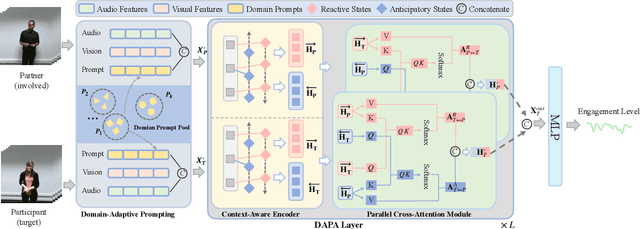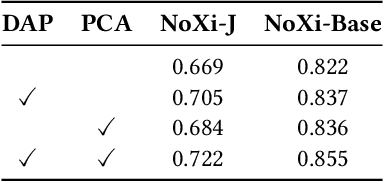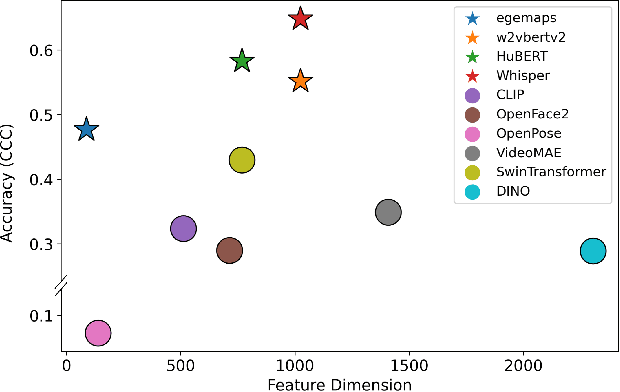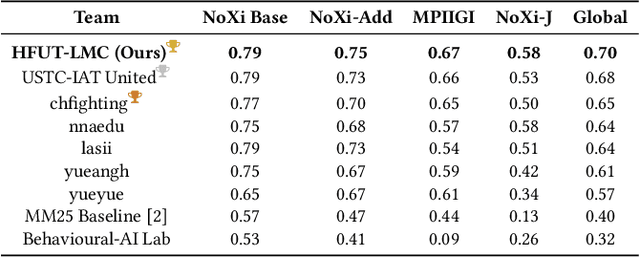Meng Wang
School of Electronic and Information Engineering Liaoning Technical University Xingcheng City, Liaoning Province, P. R. China
GRPO-Guard: Mitigating Implicit Over-Optimization in Flow Matching via Regulated Clipping
Oct 25, 2025Abstract:Recently, GRPO-based reinforcement learning has shown remarkable progress in optimizing flow-matching models, effectively improving their alignment with task-specific rewards. Within these frameworks, the policy update relies on importance-ratio clipping to constrain overconfident positive and negative gradients. However, in practice, we observe a systematic shift in the importance-ratio distribution-its mean falls below 1 and its variance differs substantially across timesteps. This left-shifted and inconsistent distribution prevents positive-advantage samples from entering the clipped region, causing the mechanism to fail in constraining overconfident positive updates. As a result, the policy model inevitably enters an implicit over-optimization stage-while the proxy reward continues to increase, essential metrics such as image quality and text-prompt alignment deteriorate sharply, ultimately making the learned policy impractical for real-world use. To address this issue, we introduce GRPO-Guard, a simple yet effective enhancement to existing GRPO frameworks. Our method incorporates ratio normalization, which restores a balanced and step-consistent importance ratio, ensuring that PPO clipping properly constrains harmful updates across denoising timesteps. In addition, a gradient reweighting strategy equalizes policy gradients over noise conditions, preventing excessive updates from particular timestep regions. Together, these designs act as a regulated clipping mechanism, stabilizing optimization and substantially mitigating implicit over-optimization without relying on heavy KL regularization. Extensive experiments on multiple diffusion backbones (e.g., SD3.5M, Flux.1-dev) and diverse proxy tasks demonstrate that GRPO-Guard significantly reduces over-optimization while maintaining or even improving generation quality.
Towards Efficient General Feature Prediction in Masked Skeleton Modeling
Sep 03, 2025Abstract:Recent advances in the masked autoencoder (MAE) paradigm have significantly propelled self-supervised skeleton-based action recognition. However, most existing approaches limit reconstruction targets to raw joint coordinates or their simple variants, resulting in computational redundancy and limited semantic representation. To address this, we propose a novel General Feature Prediction framework (GFP) for efficient mask skeleton modeling. Our key innovation is replacing conventional low-level reconstruction with high-level feature prediction that spans from local motion patterns to global semantic representations. Specifically, we introduce a collaborative learning framework where a lightweight target generation network dynamically produces diversified supervision signals across spatial-temporal hierarchies, avoiding reliance on pre-computed offline features. The framework incorporates constrained optimization to ensure feature diversity while preventing model collapse. Experiments on NTU RGB+D 60, NTU RGB+D 120 and PKU-MMD demonstrate the benefits of our approach: Computational efficiency (with 6.2$\times$ faster training than standard masked skeleton modeling methods) and superior representation quality, achieving state-of-the-art performance in various downstream tasks.
Beyond Emotion Recognition: A Multi-Turn Multimodal Emotion Understanding and Reasoning Benchmark
Aug 23, 2025Abstract:Multimodal large language models (MLLMs) have been widely applied across various fields due to their powerful perceptual and reasoning capabilities. In the realm of psychology, these models hold promise for a deeper understanding of human emotions and behaviors. However, recent research primarily focuses on enhancing their emotion recognition abilities, leaving the substantial potential in emotion reasoning, which is crucial for improving the naturalness and effectiveness of human-machine interactions. Therefore, in this paper, we introduce a multi-turn multimodal emotion understanding and reasoning (MTMEUR) benchmark, which encompasses 1,451 video data from real-life scenarios, along with 5,101 progressive questions. These questions cover various aspects, including emotion recognition, potential causes of emotions, future action prediction, etc. Besides, we propose a multi-agent framework, where each agent specializes in a specific aspect, such as background context, character dynamics, and event details, to improve the system's reasoning capabilities. Furthermore, we conduct experiments with existing MLLMs and our agent-based method on the proposed benchmark, revealing that most models face significant challenges with this task.
Generalizable Engagement Estimation in Conversation via Domain Prompting and Parallel Attention
Aug 20, 2025



Abstract:Accurate engagement estimation is essential for adaptive human-computer interaction systems, yet robust deployment is hindered by poor generalizability across diverse domains and challenges in modeling complex interaction dynamics.To tackle these issues, we propose DAPA (Domain-Adaptive Parallel Attention), a novel framework for generalizable conversational engagement modeling. DAPA introduces a Domain Prompting mechanism by prepending learnable domain-specific vectors to the input, explicitly conditioning the model on the data's origin to facilitate domain-aware adaptation while preserving generalizable engagement representations. To capture interactional synchrony, the framework also incorporates a Parallel Cross-Attention module that explicitly aligns reactive (forward BiLSTM) and anticipatory (backward BiLSTM) states between participants.Extensive experiments demonstrate that DAPA establishes a new state-of-the-art performance on several cross-cultural and cross-linguistic benchmarks, notably achieving an absolute improvement of 0.45 in Concordance Correlation Coefficient (CCC) over a strong baseline on the NoXi-J test set. The superiority of our method was also confirmed by winning the first place in the Multi-Domain Engagement Estimation Challenge at MultiMediate'25.
DistillDrive: End-to-End Multi-Mode Autonomous Driving Distillation by Isomorphic Hetero-Source Planning Model
Aug 07, 2025Abstract:End-to-end autonomous driving has been recently seen rapid development, exerting a profound influence on both industry and academia. However, the existing work places excessive focus on ego-vehicle status as their sole learning objectives and lacks of planning-oriented understanding, which limits the robustness of the overall decision-making prcocess. In this work, we introduce DistillDrive, an end-to-end knowledge distillation-based autonomous driving model that leverages diversified instance imitation to enhance multi-mode motion feature learning. Specifically, we employ a planning model based on structured scene representations as the teacher model, leveraging its diversified planning instances as multi-objective learning targets for the end-to-end model. Moreover, we incorporate reinforcement learning to enhance the optimization of state-to-decision mappings, while utilizing generative modeling to construct planning-oriented instances, fostering intricate interactions within the latent space. We validate our model on the nuScenes and NAVSIM datasets, achieving a 50\% reduction in collision rate and a 3-point improvement in closed-loop performance compared to the baseline model. Code and model are publicly available at https://github.com/YuruiAI/DistillDrive
I$^3$-MRec: Invariant Learning with Information Bottleneck for Incomplete Modality Recommendation
Aug 06, 2025



Abstract:Multimodal recommender systems (MRS) improve recommendation performance by integrating diverse semantic information from multiple modalities. However, the assumption of the availability of all modalities rarely holds in practice due to missing images, incomplete descriptions, or inconsistent user content. These challenges significantly degrade the robustness and generalization capabilities of current models. To address these challenges, we introduce a novel method called \textbf{I$^3$-MRec}, which uses \textbf{I}nvariant learning with \textbf{I}nformation bottleneck principle for \textbf{I}ncomplete \textbf{M}odality \textbf{Rec}ommendation. To achieve robust performance in missing modality scenarios, I$^3$-MRec enforces two pivotal properties: (i) cross-modal preference invariance, which ensures consistent user preference modeling across varying modality environments, and (ii) compact yet effective modality representation, which filters out task-irrelevant modality information while maximally preserving essential features relevant to recommendation. By treating each modality as a distinct semantic environment, I$^3$-MRec employs invariant risk minimization (IRM) to learn modality-specific item representations. In parallel, a missing-aware fusion module grounded in the Information Bottleneck (IB) principle extracts compact and effective item embeddings by suppressing modality noise and preserving core user preference signals. Extensive experiments conducted on three real-world datasets demonstrate that I$^3$-MRec consistently outperforms existing state-of-the-art MRS methods across various modality-missing scenarios, highlighting its effectiveness and robustness in practical applications. The code and processed datasets are released at https://github.com/HuilinChenJN/I3-MRec.
* ACM Multimedia 2025 Accepted
Traits Run Deep: Enhancing Personality Assessment via Psychology-Guided LLM Representations and Multimodal Apparent Behaviors
Jul 30, 2025



Abstract:Accurate and reliable personality assessment plays a vital role in many fields, such as emotional intelligence, mental health diagnostics, and personalized education. Unlike fleeting emotions, personality traits are stable, often subconsciously leaked through language, facial expressions, and body behaviors, with asynchronous patterns across modalities. It was hard to model personality semantics with traditional superficial features and seemed impossible to achieve effective cross-modal understanding. To address these challenges, we propose a novel personality assessment framework called \textit{\textbf{Traits Run Deep}}. It employs \textit{\textbf{psychology-informed prompts}} to elicit high-level personality-relevant semantic representations. Besides, it devises a \textit{\textbf{Text-Centric Trait Fusion Network}} that anchors rich text semantics to align and integrate asynchronous signals from other modalities. To be specific, such fusion module includes a Chunk-Wise Projector to decrease dimensionality, a Cross-Modal Connector and a Text Feature Enhancer for effective modality fusion and an ensemble regression head to improve generalization in data-scarce situations. To our knowledge, we are the first to apply personality-specific prompts to guide large language models (LLMs) in extracting personality-aware semantics for improved representation quality. Furthermore, extracting and fusing audio-visual apparent behavior features further improves the accuracy. Experimental results on the AVI validation set have demonstrated the effectiveness of the proposed components, i.e., approximately a 45\% reduction in mean squared error (MSE). Final evaluations on the test set of the AVI Challenge 2025 confirm our method's superiority, ranking first in the Personality Assessment track. The source code will be made available at https://github.com/MSA-LMC/TraitsRunDeep.
Listening to the Unspoken: Exploring 365 Aspects of Multimodal Interview Performance Assessment
Jul 30, 2025



Abstract:Interview performance assessment is essential for determining candidates' suitability for professional positions. To ensure holistic and fair evaluations, we propose a novel and comprehensive framework that explores ``365'' aspects of interview performance by integrating \textit{three} modalities (video, audio, and text), \textit{six} responses per candidate, and \textit{five} key evaluation dimensions. The framework employs modality-specific feature extractors to encode heterogeneous data streams and subsequently fused via a Shared Compression Multilayer Perceptron. This module compresses multimodal embeddings into a unified latent space, facilitating efficient feature interaction. To enhance prediction robustness, we incorporate a two-level ensemble learning strategy: (1) independent regression heads predict scores for each response, and (2) predictions are aggregated across responses using a mean-pooling mechanism to produce final scores for the five target dimensions. By listening to the unspoken, our approach captures both explicit and implicit cues from multimodal data, enabling comprehensive and unbiased assessments. Achieving a multi-dimensional average MSE of 0.1824, our framework secured first place in the AVI Challenge 2025, demonstrating its effectiveness and robustness in advancing automated and multimodal interview performance assessment. The full implementation is available at https://github.com/MSA-LMC/365Aspects.
Motion Matters: Motion-guided Modulation Network for Skeleton-based Micro-Action Recognition
Jul 29, 2025Abstract:Micro-Actions (MAs) are an important form of non-verbal communication in social interactions, with potential applications in human emotional analysis. However, existing methods in Micro-Action Recognition often overlook the inherent subtle changes in MAs, which limits the accuracy of distinguishing MAs with subtle changes. To address this issue, we present a novel Motion-guided Modulation Network (MMN) that implicitly captures and modulates subtle motion cues to enhance spatial-temporal representation learning. Specifically, we introduce a Motion-guided Skeletal Modulation module (MSM) to inject motion cues at the skeletal level, acting as a control signal to guide spatial representation modeling. In parallel, we design a Motion-guided Temporal Modulation module (MTM) to incorporate motion information at the frame level, facilitating the modeling of holistic motion patterns in micro-actions. Finally, we propose a motion consistency learning strategy to aggregate the motion cues from multi-scale features for micro-action classification. Experimental results on the Micro-Action 52 and iMiGUE datasets demonstrate that MMN achieves state-of-the-art performance in skeleton-based micro-action recognition, underscoring the importance of explicitly modeling subtle motion cues. The code will be available at https://github.com/momiji-bit/MMN.
GT-Mean Loss: A Simple Yet Effective Solution for Brightness Mismatch in Low-Light Image Enhancement
Jul 27, 2025



Abstract:Low-light image enhancement (LLIE) aims to improve the visual quality of images captured under poor lighting conditions. In supervised LLIE research, there exists a significant yet often overlooked inconsistency between the overall brightness of an enhanced image and its ground truth counterpart, referred to as brightness mismatch in this study. Brightness mismatch negatively impact supervised LLIE models by misleading model training. However, this issue is largely neglected in current research. In this context, we propose the GT-mean loss, a simple yet effective loss function directly modeling the mean values of images from a probabilistic perspective. The GT-mean loss is flexible, as it extends existing supervised LLIE loss functions into the GT-mean form with minimal additional computational costs. Extensive experiments demonstrate that the incorporation of the GT-mean loss results in consistent performance improvements across various methods and datasets.
 Add to Chrome
Add to Chrome Add to Firefox
Add to Firefox Add to Edge
Add to Edge